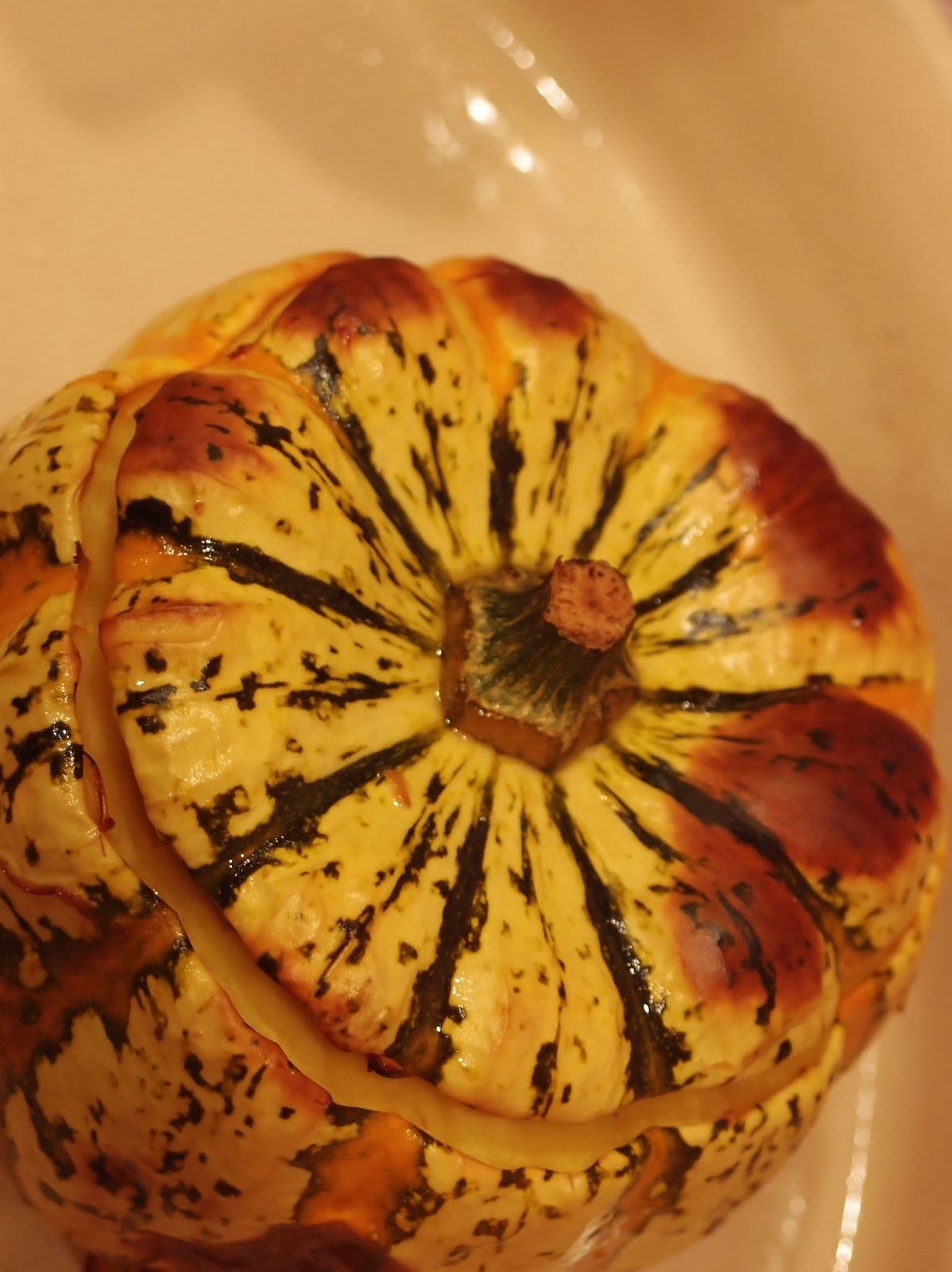Before starting
with the whole Christmas recipes, there is still time to post a good basic
weekday meal. Potato skins filled with vegetarian goodness are a
wonderful winter dish. Alone thinking of them makes me feel warm and
cosy. This recipe makes a few quite hearty and simple potato skins,
which I'm sure you would enjoy.


Ingredients
4 large potatoes
2 leeks
150g Red Leicester
cheese
150g Applewood
smoked cheddar
½dl dry cider
Olive oil
Butter
Sea salt
Ground black
pepper
Method
Heat the oven to
180C. Wash the potatoes and stab them with a fork several times. Roll
the potatoes in a mix of olive oil and sea salt and place them on a
baking tray. Remove any excess oil from the baking tray and add more
salt on the potatoes, if you feel like not enough stuck to them. The
salty potato skins give a very nice flavour to this dish.
Bake the potatoes
in the oven for about one hour until they are baked soft throughout
and have golden brown crusts. To achieve more even browning, turn the
potatoes midway through the baking. The baking time depends on the
size of your potatoes, and it pays off to be patient with this dish.
In the meanwhile
chop the leeks into small rings and grate the cheeses. Heat some
butter in a pan and sweat the leeks in there. When they have cooked
for about 10 minutes, add a dash of dry cider to the pan and let it
evaporate. Season the leeks with ground black pepper and little salt
as well. Don't add any salt if you think that they will be salty
enough through the sea salt on the skins.
When the potatoes
are done, take them out of the oven and cut them in half. Scoop the
insides out and mix the insides with the leeks and grated cheese in a
warm pan. The scooping process can be slightly tedious in the sense
that the thin skins can easily rip when you are trying to remove the
insides. Stuff the mixed filling into the potato skins. If this
process of scooping and stuffing takes a while longer so that the
food gets a little cold, pop the potatoes back into the oven for a
while to be re-heated.
Serve with a fresh
salad and enjoy!
Your VegHog


















































